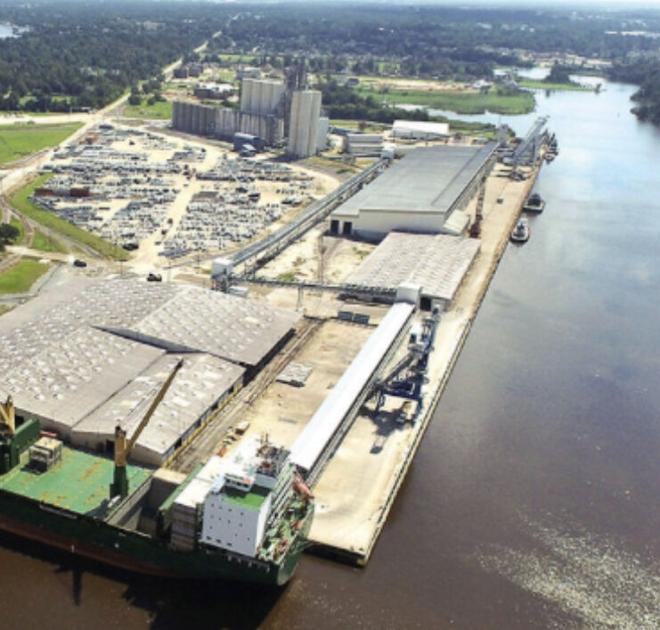A new state law is instrumental in making sure the Calcasieu Ship Channel remains dredged to its proper dimensions, Port of Lake Charles officials said Wednesday.
Act 332 partners the port, various local industries and the state to create the Calcasieu River Fund. The port, industry and the state will each contribute $3 million to the fund in its first year. Over the next four years, the state will contribute $5 million annually, with the port and industry each putting up $2.5 million annually. Funding will be allocated by the three-member Calcasieu Ship Channel Funding Management Board.
Richert Self, port director, said the fund will make sure there are enough sites to properly dispose of dredged materials, allowing the U.S. Army Corps of Engineers to dredge the ship channel to its authorized dimensions of 400-feet wide by 40-feet deep. The Corps pays all of the costs related to dredging the ship channel.
The port, as the non-federal sponsor, is responsible for paying 100 percent of the cost of acquiring sites to dispose of dredged material. Prior to the partnership, the port spent roughly $20 million over the last five years to acquire sites and improve existing sites, Self said. Because of the industry and state contributions to the fund, it will lessen the port’s financial burden for the non-federal sponsor cost share. Self thanked the state for partnering with the port and local industry to provide a reliable funding source that ensures the channel stays properly dredged. He said it could entice out-of-state capital projects to the Port of Lake Charles.
“I can’t overstate enough how significant it is,” Self said.
John Ringo, the port’s legal counsel, said the governor’s office and local industry stepped up and committed to contribute to the fund.
“We set up this idea of a public-private partnership,” he said. “Industry all came to the table. I think they see the issue too because they can’t bring their ships in if we don’t solve this problem.”
Judy McCleary, port board member, said the partnership helps with long-term business development.
“That doesn’t happen a whole lot where all the parties come together and take responsibility,” she said. “Even if it’s not going to cure all our problems, it certainly goes a long way in demonstrating that we have a plan and we have some money to back it up.”
Ship channel
The ship channel’s authorized dimensions allow certain ships to pass alongside each other, Channing Hayden, the port’s navigation director, said. However, a buildup of mud on some parts of the channel can impose draft restrictions for ships.
The local and state economies depend on the ship channel being properly dredged, Hayden said. The channel supported 37,000 local jobs in 2014, with another 10,700 jobs expected by 2023, according to a 2017 study. The channel also supported 50,000 state jobs in 2014, with another 16,700 jobs anticipated by 2023.
Funding history
In the early 1960s, the state designated the port as its non-federal sponsor. That put the port
responsible for paying 100 percent of any costs related to acquiring sites to dispose of dredged material. The port also has to pay all the costs associated with beneficial use of dredged material, as well as removing and relocating pipelines and power lines. The port also has to pay 25 percent of the cost of reconstructing sites to increase their capacity.
Under the agreement to implement the Dredged Material Management Plan, the port agreed to pay any of the non-federal cost share. Part of that cost is to rebuild disposal sites. Without sufficient disposal capacity, the Corps will eventually have to stop dredging the channel, Hayden said.
Self and Hayden said the funding could allow for more projects that use dredged material for beneficial use, such as coastal restoration. Any proposals have to be approved by the funding management board.
Local industries that helped get the law passed include Venture Global LNG, Cameron LNG, Alcoa, Lake Charles LNG, Magnolia LNG, Driftwood LNG, Westlake Chemical, Citgo, Phillips 66, Dunham Price and Port Aggregates.


